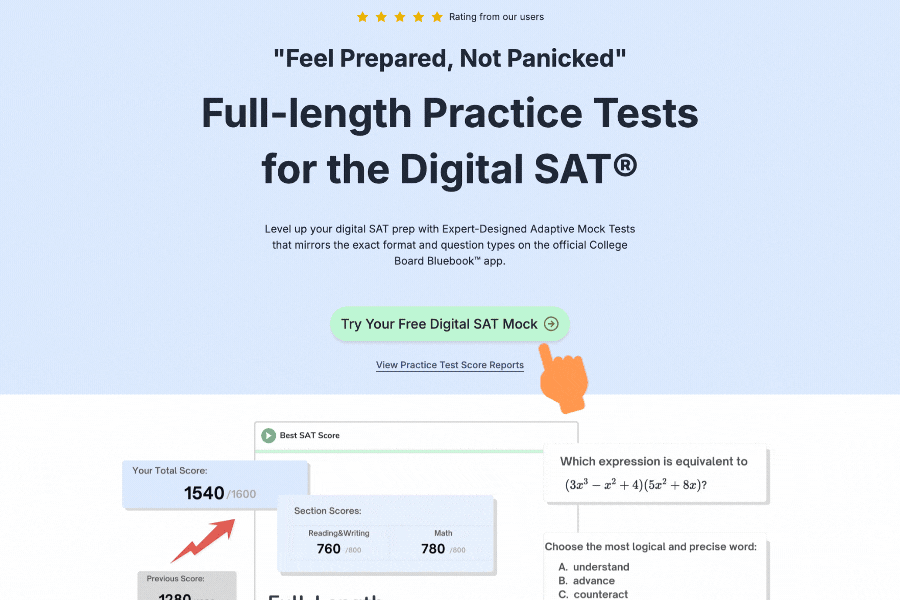📝 Transition words form a vast system. In this section, we've classified them into 5 major categories to help you quickly understand the types of transitions you'll encounter in SAT questions.
Additionally, in the later section (All "Transitions" Shown Up in the Digital SAT), we've compiled every transition word/phrase that has appeared in the actual Digital SAT.
1. Agreement
Use agreement transitions when two sentences or ideas express the same thought or reinforce one another. These transitions emphasize consistency or parallelism in ideas.
Common Transitions:
"similarly", "again", "also", "correspondingly", "equally", "likewise", "in the same way", etc.
Example:
"Quinoa is a fantastic option for incorporating plant-based protein into meals. Likewise, other whole grains, such as farro and barley, can provide valuable protein and nutrients for those following vegan or vegetarian diets."
2. Disagreement
Use disagreement transitions when ideas in two sentences contrast, oppose, or qualify each other in some way.
Common Transitions:
"however", "but", "yet", "still", "although", "on the other hand", "in/by contrast", "on the contrary", "even so", etc.
Example:
"The scientist presented a groundbreaking theory. However, some critics were quick to point out its potential flaws."
3. Sequence and Order
Use sequence transitions when ideas are arranged by time, process, or spatial order. These transitions help the reader follow chronological events or the flow of an argument.
Common Transitions:
"previously", "then", "finally", "subsequently", "at the same time", "next", "later", etc.
Example:
"The team completed the research phase. Then, they began testing the product."
4. Addition and Exemplification
Use addition transitions when elaborating or building upon an idea presented in the initial sentence. The second idea further supports or strengthens the first idea.
Common Transitions:
"furthermore", "also", "moreover", "in fact", "additionally", "what's more", "specifically", etc.
Example:
"The athlete trained rigorously for several months. Additionally, she made changes to her diet to improve performance."
5. Cause and Effect
Use cause-and-effect transitions when the second sentence explains the reason for or the consequence of the first idea.
Common Transitions:
"therefore", "since", "thus", "as a result", "consequently", "hence", "due to", "thanks to", etc.
Example:
"The storm damaged the bridge. As a result, it was closed to traffic."
💡 SAT Tips for "Transitions"
In the actual digital SAT, the range of transition word testing is very broad, with multiple words available to express the same type of transition. Simple distractors are clearly distinguishable by type, while more complex questions are reflected in subtler differences. When deciding between "possible" and "perfect" options for connecting ideas of sentences, we should always choose the one that is "perfect."
